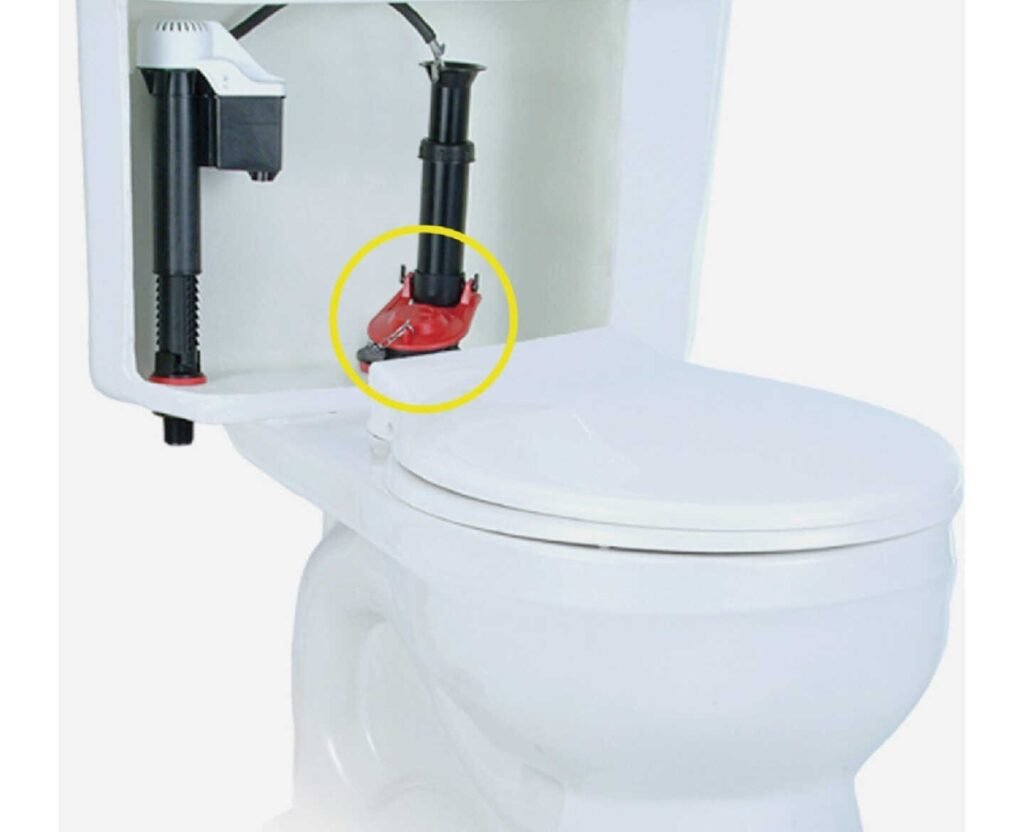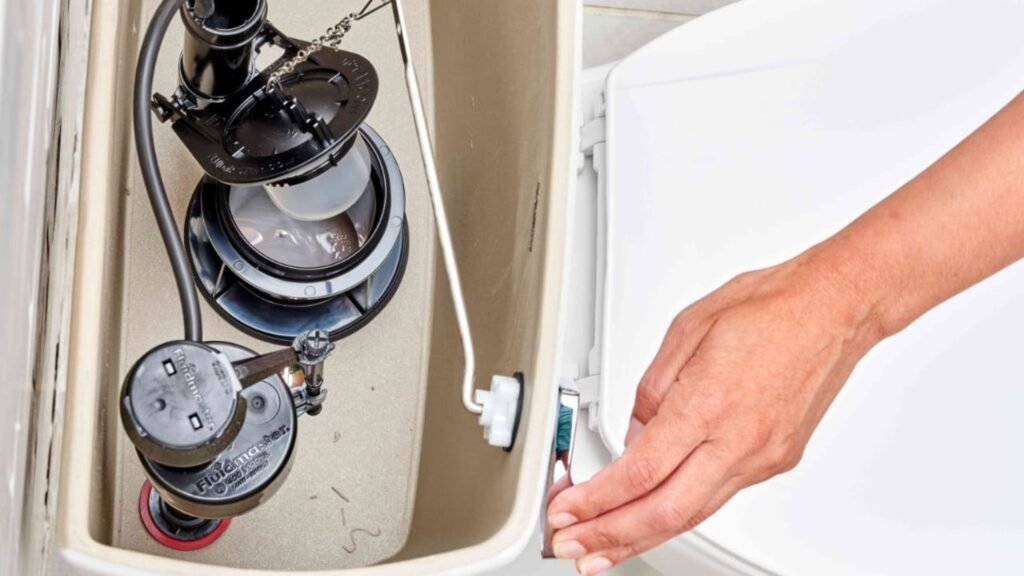A toilet flapper is a small part with a big job. This small seal is essential for a proper flush. Understanding its role helps you maintain your toilet. A functional flapper saves water. It also prevents annoying toilet noises. We will cover its function, common problems, and replacement steps. Proper maintenance starts with knowledge. Let’s explore the world inside your toilet tank.
A running toilet is a common household issue. The sound of water constantly trickling is a sign of trouble. This often points to a faulty toilet flapper. This waste impacts your utility bills. It also affects the environment. Fixing this problem is usually simple. It is an inexpensive repair. This post will empower you to tackle this common plumbing task.
What is a Toilet Flapper?
The toilet flapper is a rubber seal. It covers the opening of the flush valve. This valve connects the tank to the toilet bowl. The flapper’s main purpose is to hold water in the tank. It keeps the tank full between flushes. This action releases water into the bowl. This creates the flush.
You can find the flapper inside the tank. First, remove the toilet tank lid. Look inside. You will see several parts. It is hinged at the back. A chain connects the flapper to the flush handle lever. This connection is vital. It allows the flush mechanism to work. When you press the handle, the lever pulls the chain. The chain lifts the flapper. This simple mechanism is highly effective.
Other key parts work with the flapper. The flush valve is the large opening at the tank’s bottom. The flapper must seal this opening completely. The overflow tube is a vertical pipe. It prevents the tank from overflowing. Some flapper designs slide over this tube. Most attach to pegs on the sides of the flush valve. The fill valve, or ballcock, refills the tank after a flush. All these components must work together. A failure in one part can affect the entire system. Its rubber material degrades over time.

How a Toilet Flapper Works
The flushing process is a coordinated effort. It begins when you press the toilet handle. The handle moves a lever arm inside the tank. This lever arm is connected to the flapper’s chain. The lever pulls the chain upward. This lift pulls the flapper off the flush valve seat. Water stored in the tank immediately rushes down.
This rush of water creates a powerful siphoning action. The action clears the bowl’s contents. The flapper becomes less buoyant. It starts to fall back into place. It creates a tight seal. This seal stops the flow of water into the bowl.
With the flapper resealed, the fill valve takes over. The fill valve senses the low water level. It opens to let fresh water into the tank. A small tube also directs water into the overflow tube. This refills the toilet bowl to its proper level. The tank continues to fill. The water level rises. When the water reaches the set level, the float shuts off the fill valve. The entire cycle depends on the flapper opening and closing correctly.
Common Signs of a Bad Toilet Flapper
A failing flapper gives several clear signals. This sound means the flapper is not sealing the flush valve. The fill valve then has to run continuously. It tries to keep the tank full. This is a significant source of water waste. Another symptom is a “phantom flush.” The toilet seems to flush by itself. This happens when the tank slowly loses water. The leak is through the faulty flapper. Once enough water has leaked out, the fill valve activates. It refills the tank. The sound of the tank refilling without a flush is a phantom flush.
You might also notice you need to hold the handle down. A normal flush requires just a quick press of the handle. If you must hold it down to complete the flush, the flapper may be closing too soon. It loses its buoyancy. It cannot stay open long enough for a full flush. Sometimes, you might see water trickling down the sides of the bowl. This happens long after a flush. Do not flush the toilet. Wait for about 30 minutes. Check the water in the bowl. If you see colored water, you leak. The flapper is the most likely culprit.
How to Replace a Toilet Flapper
It typically takes less than 30 minutes. The cost is also low. You will need minimal equipment. A pair of heavy-duty scissors or snips might be necessary. Rubber gloves are optional but recommended.
Step 1: Turn Off the Water
First, locate the water shutoff valve. Turn the valve handle clockwise. Turn it until it stops. Now, you need to drain the tank. Flush the toilet. Hold the handle down. There will be a small amount of water left at the bottom. This is normal.
Step 2: Remove the Old Flapper
Next, you will remove the old flapper. Open the toilet tank. The flapper is connected in two places. First, disconnect the chain. Unhook it from the lever arm. Then, unhook the other end from the flapper. Most flappers have two “ears.” These ears slip over pegs on the sides of the flush valve. The old flapper is now free. You can remove it from the tank.
Step 3: Prepare the New Flapper
Examine your new flapper. Some universal flappers come with a ring. This ring is for toilets without side pegs. Most modern toilets use the peg system. Compare the new flapper to the old one.
Step 4: Install the New Flapper
Now, install the new flapper. Position it over the flush valve opening. Hook each ear onto its corresponding peg. Ensure they are secure. Next, connect the new chain. Attach one end to the flapper. Attach the other end to the flush handle lever. Adjust the chain length. When the handle is at rest, the chain should have a little slack. Too much slack can get caught under the flapper. Too little slack will prevent the flapper from sealing.
Step 5: Test the New Flapper
The final step is to test your work. Turn the water back on. Turn the shutoff valve counterclockwise. The tank will begin to fill. Watch the flapper operate. It should lift completely. It should then fall back into place smoothly. The seal should be tight. Flush the toilet a few more times. Check for any leaks or issues. If the toilet flushes correctly and does not run, you have succeeded. Your new flapper is installed.
The Unseen Guardian of Your Home
The toilet flapper is more than a piece of rubber. Its simple design belies its critical importance. This small component stands between water conservation and significant waste. A well-maintained flapper performs its duty thousands of times a year. It operates unseen and unheard. We only notice it when it fails.
Thinking of the flapper in this way changes our perspective. It is not just a part to fix when broken. Its health reflects our own attention to detail. A proactive check-up can prevent the waste of thousands of gallons of water. It can save money. It can reduce strain on municipal water systems. The humble flapper teaches a valuable lesson. Maintaining them is not just a chore. It is an act of responsible stewardship for our homes and our shared resources.

